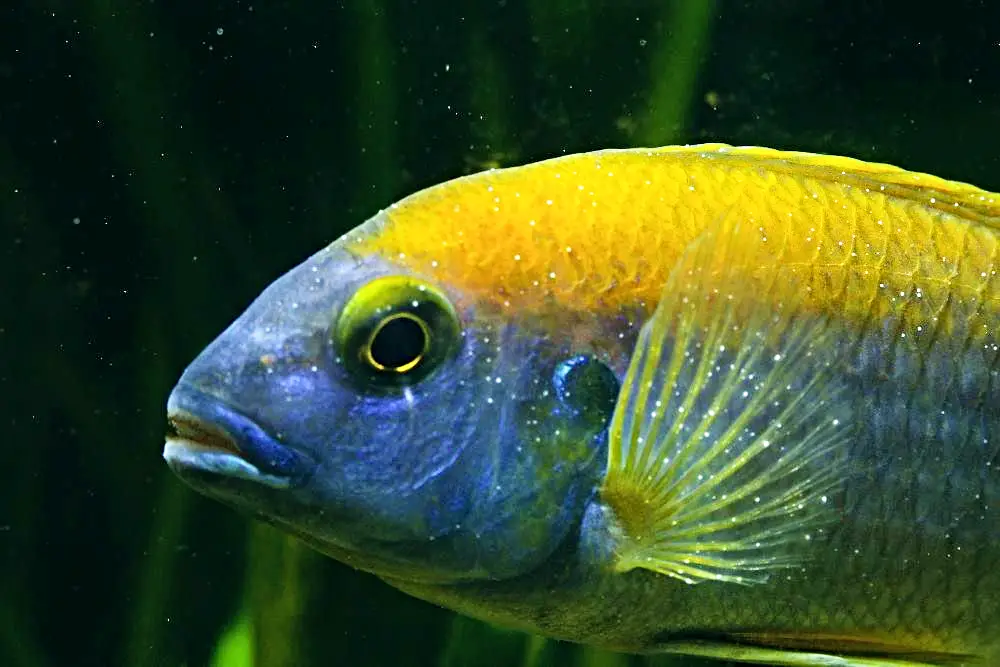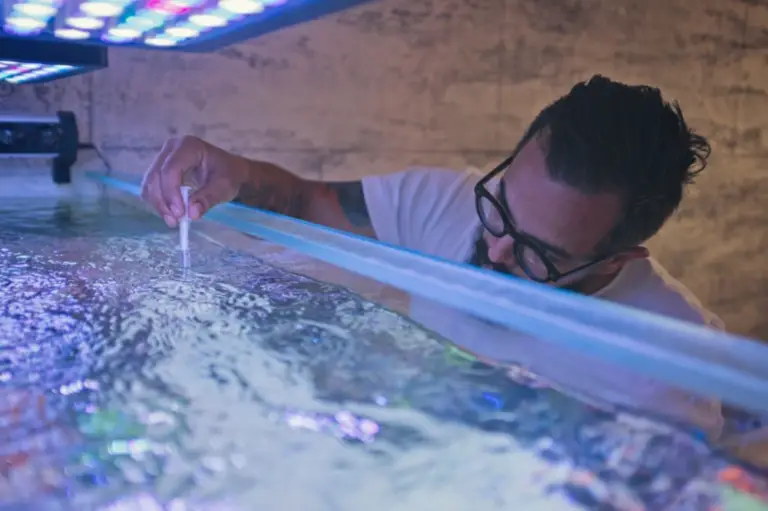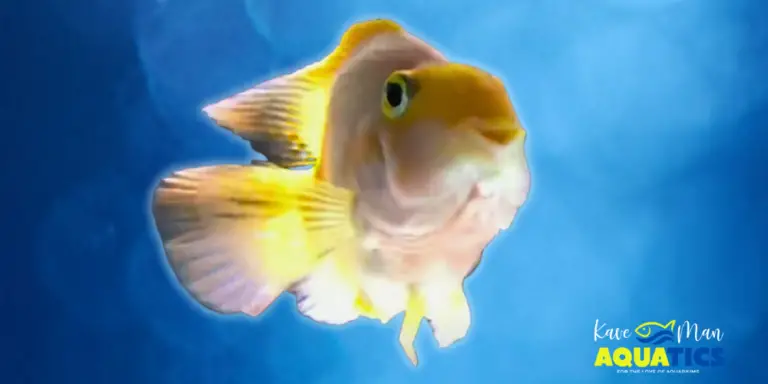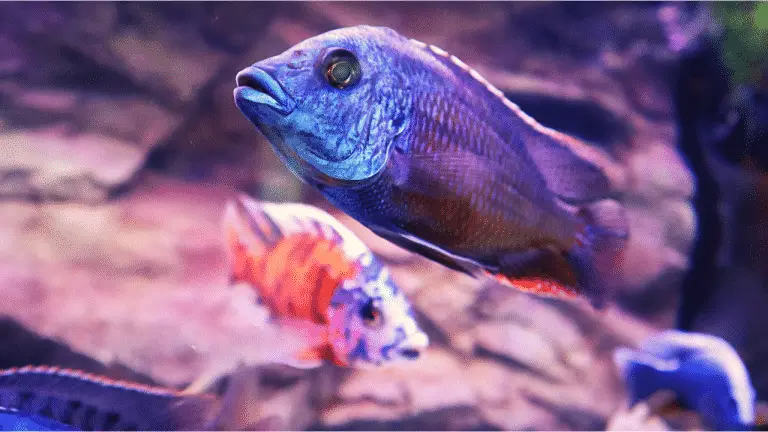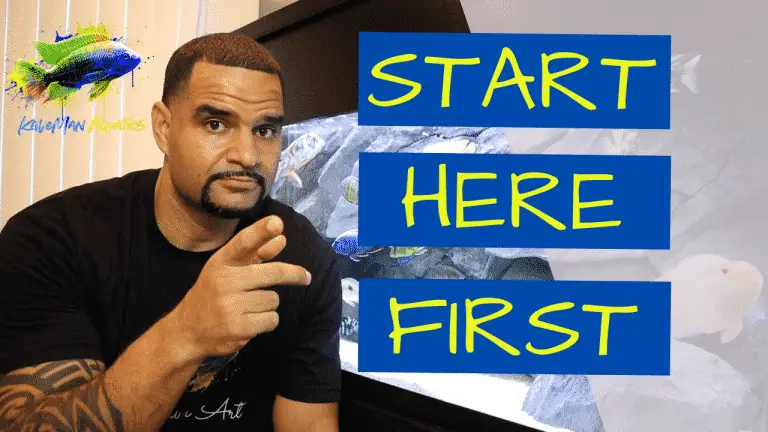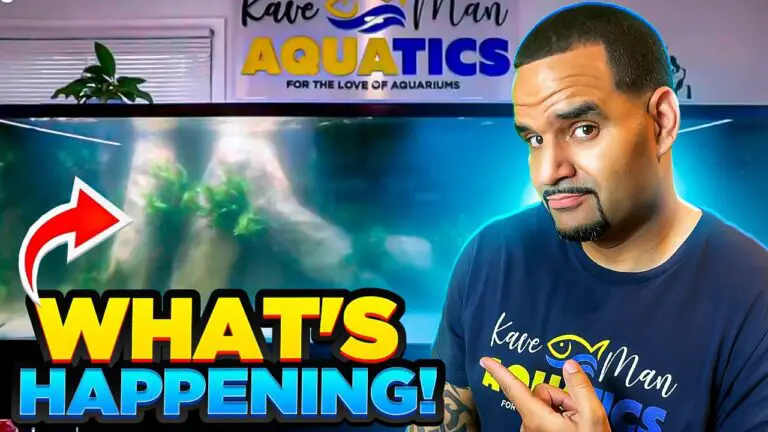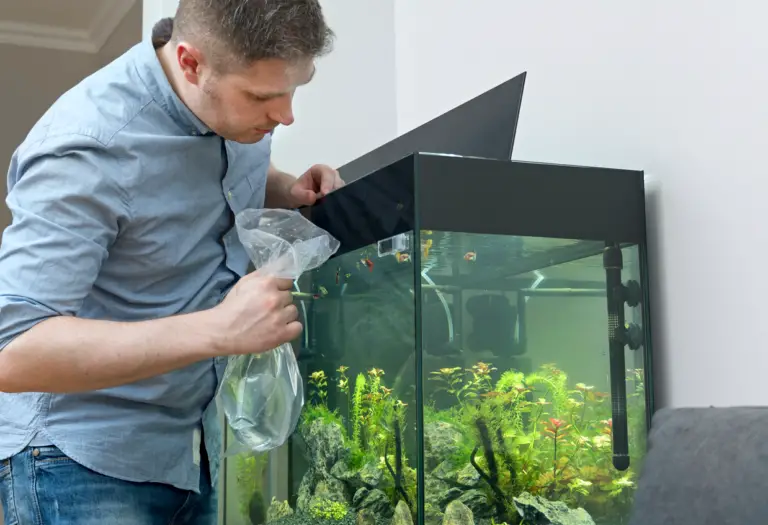Complete Guide on How to Treat Ich in Fish — Signs, Causes and Prevention
How to treat ich in fish is a very common question. Ich— also written “ick” — is caused by an external protozoan parasite that forms many white spots on the skin and gills of your freshwater fish. These patches frequently resemble white grains of salt or sugar spread throughout the body, gills, and fins of the fish. Other typical ich symptoms in fish include rubbing or scratching against tank items, hiding, and refusing to feed.
Ich is a frequent parasitic illness of freshwater fish and one of the few fish parasites visible to the human eye. However, additional non-parasitic causes of white spots on fish must be checked out before therapy can begin. Understanding the parasite’s lifecycle is essential for effective therapy. Healing an ich-infected fish is challenging, but not impossible.
What Is Ich in fish?
Ich — or white spot illness — is caused by the protozoan parasite Ichthyophthirius multifiliis, which means “fish louse with many children” in Latin. This parasite has a complicated life cycle that makes treatment challenging. The parasite’s massive feeding (trophont) stage is visible to the naked eye as white patches on the fish’s body, however, it’s highly resistant to treatment. Although the free-swimming theront stage is not visible, it’s the only stage of the parasite’s lifecycle that is treatable.
Infestations may arise extremely quickly since it only takes one trophont to reproduce (as a tomont) after feeding on a fish — releasing about 1,000 new infective organisms (theront) into an aquarium. The lifecycle is temperature dependant, with warmer water having fewer days between phases and colder water having a longer life cycle.
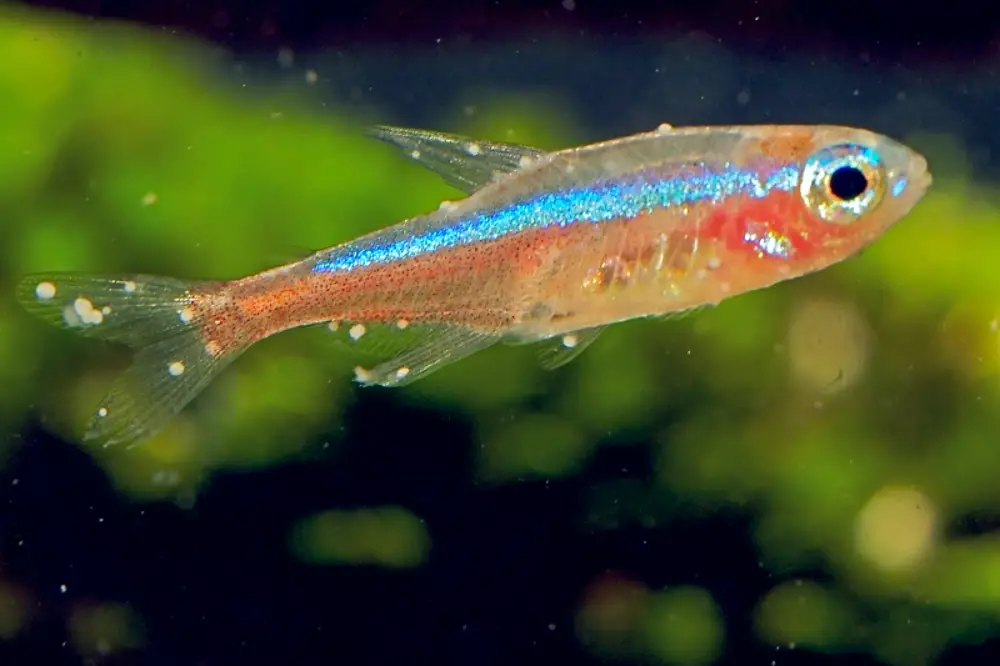
Signs of Ich in Fish
Ich might be confused with other minor problems. Fin ray fractures, or cartilage fractures, can appear as white patches on the fins but are not life-threatening. Male goldfish breeding tubercles, which produce many white bumps on the operculum and pectoral fin, appear identical to ich but have anatomical differences. Lymphocystis, a viral condition in fish, can cause similar white spots on the fins, but your veterinarian can tell the difference.
That said, here are some common signs of ich in freshwater fish:
- Small white markings on the body or fins of the fish
- Fish flashing or scratching against items
- Bruising or scale loss as a result of flashing
- Drowsiness and increased respiratory effort
- Unexpected death (can be multiple fish in one aquarium)
Causes of Ich in fish
The failure to quarantine a new fish is the most prevalent cause of ich. Because it only takes one infectious ich parasite to reproduce and spread across an entire tank or pond, most fish will “appear alright” and not behave sick at all until the parasite’s lifecycles are through — which can take a few days to a few weeks depending on your water temperature. All new fish should be quarantined safely to avoid the spread of ich to your primary tank.
Other possible reasons include:
- Using contaminated equipment between tanks without adequate sanitation
- Transferring diseased filter media or décor from one tank to another
- Transferring contaminated water across systems
- Adding plants that may have ich tomonts clinging to them to an aquarium
How to Treat Ich in Fish
Hikari’s Ich-x is a very commonly known Ich medication. Follow the medication’s directions carefully, making sure you’ve calculated the correct volume of aquarium water. Overdosing can be harmful to the fish, while underdosing may not be enough to kill the ich theronts. For 10-14 days, continue to treat every other day. On the days between medicine dosages, perform partial water changes. Examine your fish carefully to ensure that the trophonts (white spots) don’t reappear following treatment.
It’s vital to monitor and maintain water temperature in order to guarantee that the parasite is entirely eradicated from your aquarium. Many online forums may advise you to raise the temperature of your water to shorten the ich lifecycle. Unfortunately, you may stress your fish by doing so, so make sure they are of a species that can endure warmer water temperatures before boosting the temperature above 80 degrees Fahrenheit.
Once you have made sure they can handle higher temperatures, it’s one of the best and easiest methods for treat ich. Follow this step by step guide on treating ich by raising tank temperature.
In addition, here are other very effective aquarium medications and what they treat:
How to Prevent Ich
To keep ich and other parasites and illnesses out of your aquarium, quarantine any new arrivals, including fish, invertebrates, and plants, in a separate tank with separate equipment for four to six weeks. At higher temperatures, quarantine will be somewhat shorter. Don’t change your fish’s optimal temperature range to reduce the quarantine time. This can cause stress in your fish and leave them vulnerable to a variety of illnesses and parasites.
Quarantine any new plants that have previously been housed with fish. By isolating plants from all fish and invertebrates for at least two weeks, the parasite lifecycle will be disrupted since there will be no fish to feed on, and the parasite will die off. Ich must be hosted by a fish to complete its lifecycle. Because travel and handling may easily harm aquatic plants, use these two weeks to strengthen your plants with some extra fertilizer.
Maintain proper water quality at all times and offer adequate nutrition to boost your fish’s general health and wellness. Maintain a regular maintenance routine. Check-in on all of your fish on a daily basis and get to know their usual appetites and habits so you can spot problems promptly. If you feel your fish is ill, call your aquatic veterinarian as soon as possible.
1-on-1 Coaching from KaveMan Aquatics
Can’t get enough of aquarium beginner content? We’ve got a dedicated aquarium beginners article category and a YouTube playlist that focuses solely on African cichlids.
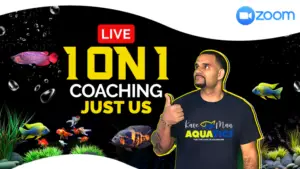
KaveMan Aquatics also offers an online video course, Keeping African Cichlids. If you feel that that’s not enough, we also offer 1-on-1 consulting services for that personal touch.
-
Complete Guide on How to Treat Ich in Fish — Signs, Causes and Prevention
Do your freshwater fish have any white spots? This may be the common parasitic illness — ich! Learn how to treat ich on freshwater fish now.

